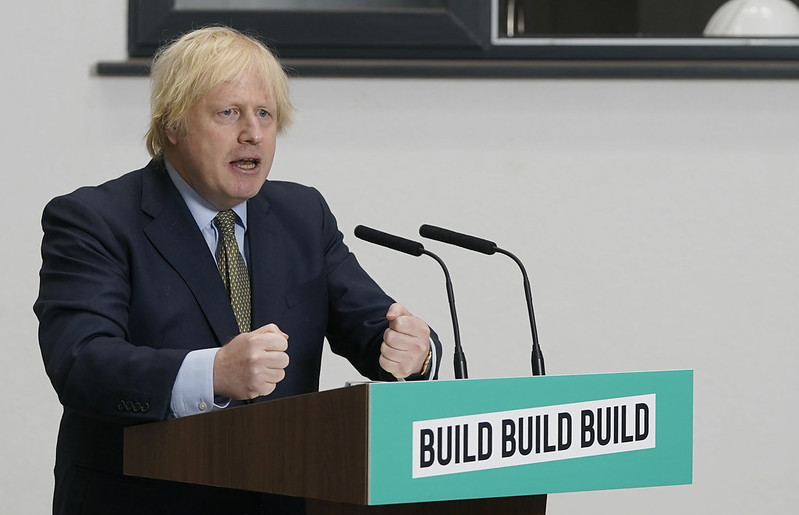Consultation is now running until 27 March 2021 on:
National Planning Policy Framework and National Model Design Code: consultation proposals
National Planning Policy Framework Draft text for consultation
Guidance notes on design codes
The proposals seek to give effect to the recommendations on the Building Better Building Beautiful Commission’s recommendations that I summarised in my 1 February 2020 blog post Beauty Duty.
“The National Model Design Code is intended to form part of the government’s planning practice guidance. It is not a statement of national policy. However, once finalised, the government recommends that the advice on how to prepare design codes and guides is followed.”
TPX comment: Do we really need a National Model Design Code? will it not stifle innovation? Will this not lead to stifling of good and innovative design? Repetitive, and soulless design? or could it improve poor design? In my view it will likely lead to a race to the bottom. The only potentially positive move is that it removes the subjective objections from the Planning Officer dealing with the application.
However, you should note that the draft NPPF changes go wider:
“We have also taken this opportunity to make a number of environment-related changes, including amendments on flood risk and climate change. The amendments also include a small number of very minor changes arising from legal cases, primarily to clarify the policy. A few minor factual changes have also been made to remove out-of-date text (for example, the early thresholds for the Housing Delivery Test), to reflect a recent change made by Written Ministerial Statement about retaining and explaining statues, and an update on the use of Article 4 directions.”
As summarised in the consultation proposal, the draft revised text:
• Implements policy changes in response to the Building Better Building Beautiful Commission recommendations
• Makes a number of changes to strengthen environmental policies – including those arising from our review of flood risk with Defra
• Includes minor changes to clarify policy in order to address legal issues
• Includes changes to remove or amend out of date material
• Includes an update to reflect a recent change made in a Written Ministerial Statement about retaining and explaining statues.
• Clarification on the use of Article 4 directions
Overarching objectives of the planning system
Paragraph 8 of the NPPF has been amended to refer to “beautiful, well-designed and safe places” (previously “a well-designed and safe built environment”).
TPX comment: The use of the word ‘beautiful’ remains far too subjective and potentially opens up the field to personal interpretation and objections levelled at the ‘beautiful’ aspect. It will be interesting to see how this develops at the Inspectorate stage when we see appeals lodged with particular reference to this phrase.
The presumption in favour of sustainable development
Paragraph 11 (a) has been amended to read:
“all plans should promote a sustainable pattern of development that seeks to: meet the development needs of their area; align growth and infrastructure; improve the environment; mitigate climate change (including by making effective use of land in urban areas) and adapt to its effects”.
(The previous wording was “plans should positively seek opportunities to meet the development needs of their area, and be sufficiently flexible to adapt to rapid change”).
TPX comment: It is obvious that Para 11a is in response to Class E. This new wording is likely to see refusals based on growth and infrastructure, and more especially, ‘improve the environment’ which is likely to be used repeatedly to refuse applications.
Article 4 directions
“We also propose clarifying our policy that Article 4 directions should be restricted to the smallest geographical area possible. Together these amendments would encourage the appropriate and proportionate use of Article 4 directions.”
This is really interesting, particularly in the context of the proposed class E to C3 permitted development right. The proposed wording is pretty tight:
“The use of Article 4 directions to remove national permitted development rights should
• where they relate to change of use to residential, be limited to situations where this is essential to avoid wholly unacceptable adverse impacts
• [or as an alternative to the above – where they relate to change of use to residential, be limited to situations where this is necessary in order to protect an interest of national significance]
• where they do not relate to change of use to residential, be limited to situations where this is necessary to protect local amenity or the well-being of the area (this could include the use of Article 4 directions to require planning permission for the demolition of local facilities)
• in all cases apply to the smallest geographical area possible.”
TPX comment: The lack of clarification about the geographical area leaves it open to misuse by the LPA. Furthermore, it is imperative that the definition of ‘wholly unacceptable adverse impacts’ is more clearly defined.
Larger scale residential proposals
There is an amendment to paragraph 73 to require that these should include “a genuine choice of transport modes”.
Isolated homes in the countryside
The design should now be “outstanding”. The “or innovative” is gone.
TPX comment: This is to be welcomed as once a design has been accepted as innovative it loses it’s status and anything else, emulating the innovation can become the mere ‘norm’. The definition of innovative is: Something innovative is new and original’ which keeps raising the benchmark. Not a bad thing but experience would indicate that ‘originality is often unachievable’.
Planners are not particularly well qualified to assess innovative design and the word ‘outstanding’ is easier to work with in the Para 79e arena. However, given the resistance of LPA’s to favourable consider Para 79e applications, It is feared that ‘outstanding’ will gain the same status as ‘innovative’ very quickly.
Affordable home ownership
“Paragraph 64 has been amended to clarify that, where major development involving the provision of housing is proposed, planning policies and decisions should expect at least 10% of the total number of homes to be available for affordable home ownership. This is to address confusion as to whether the 10% requirement applies to all units or the affordable housing contribution.”
TPX comment: The decision to widen the numbers net to increase the benchmark for affordable housing has failed to gain traction in the proposed revisions. This we consider is a great shame, nothing more would have assisted in housing development growth than raising the affordable housing benchmark figure. A great opportunity well and truly missed.
Neighbourhood plan allocations
“Paragraph 69 has been amended to remove any suggestion that neighbourhood plans can only allocate small or medium sites. This was not the policy intention, so the wording has therefore been amended to clarify that neighbourhood planning groups should also give particular consideration to the opportunities for allocating small and medium-sized sites (of a size consistent with paragraph 68a) suitable for housing in their area.”
TPX comment: This is to be welcomed. So often Neighbourhood plans have been effectively stopped from submitting sites because of the misinterpretation of Paragraphr 69.
Trees
A new paragraph 130:
“Trees make an important contribution to the character and quality of urban environments, and can also help mitigate and adapt to climate change. Planning policies and decisions should ensure that new streets are tree-lined [Unless, in specific cases, there are clear, justifiable and compelling reasons why this would be inappropriate], that opportunities are taken to incorporate trees elsewhere in developments (such as community orchards), that appropriate measures are in place to secure the long- term maintenance of newly-planted trees, and that existing trees are retained wherever possible. Applicants and local planning authorities should work with local highways officers and tree officers to ensure that the right trees are planted in the right places, and solutions are found that are compatible with highways standards and the needs of different users.”
TPX comment: Reserve judgement on this currently. Potentially a good thing but I doubt the LPA’s will have the funds after Covid to maintain the trees. Potentially creating a lot of long term damage for properties closely situated nearby. Good intention, depends how the long term plan is executed and managed.
The “well-designed” test
Paragraph 133:
“133. Development that is not well designed should be refused, especially where it fails to reflect local design policies and government guidance on design, taking into account any local design guidance and supplementary planning documents which use visual tools such as design guides and codes. Conversely, significant weight should be given to:
a) development which reflects local design policies and government guidance on design, taking into account any local design guidance and supplementary planning documents which use visual tools such as design guides and codes; and/or
b) outstanding or innovative designs which promote high levels of sustainability,, or help raise the standard of design more generally in an area, so long as they fit in with the overall form and layout of their surroundings.”
TPX Comment: NO!! Personal views etc. But local government Planning Officers are not equipped to decide what is good design… We expect to see, stifled design, repetitive large scale housing developments. How can design standards be raised with local design codes or guides. Yet again, a race to the bottom. Developers are not renowned for ‘splashing the cash’ to be creative where it costs more money.
Development affecting the setting of national parks and AONBs
“New paragraph 174 has been amended in response to the Glover Review of protected landscapes, to clarify that the scale and extent of development within the settings of National Parks and Areas of Outstanding Natural Beauty should be sensitively located and designed so as to avoid adverse impacts on the designated landscapes.”
TPX comment: This was to be expected. Just strengthening of the original NPPF guidance.
Historic statues, plaques and memorials
(which was going to be the subject of this week’s blog post until the curtains/drinking in the emails moment)
“New paragraph 196 has been added to clarify that authorities should have regard to the need to retain historic statues, plaques or memorials, with a focus on explaining their historic and social context rather than removal, where appropriate.”
TPX comment: Obviously will only impact a relatively small number of applications but of some importance to those who consider some memorials contentious.
This of course supplements Robert Jenrick’s statement to the House of Commons (18 January 2021) and MHCLG’s 17 January 2021 press statement, New legal protection for England’s heritage.


